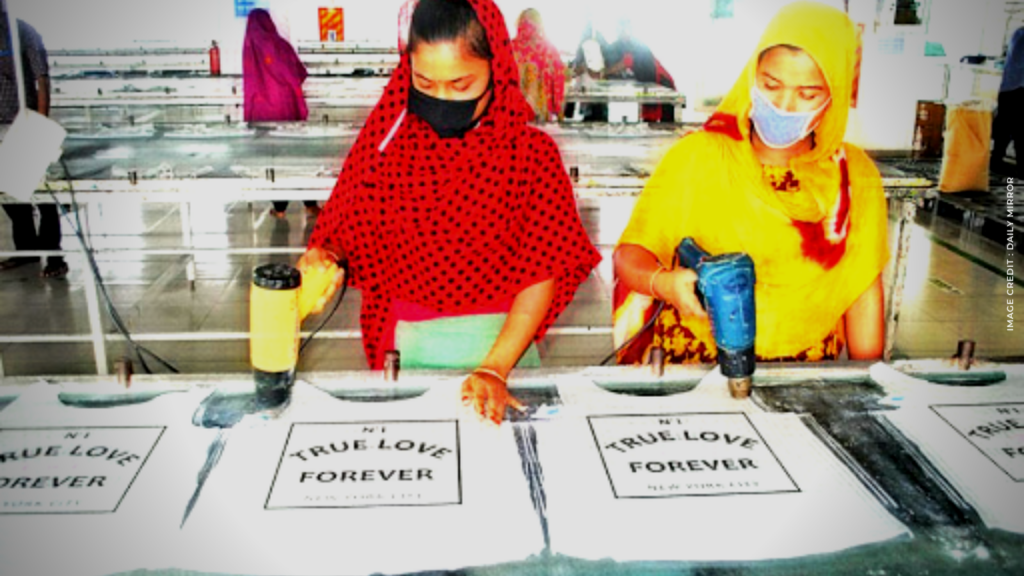During the 16th days of activism to end gender-based violence towards women, we need to talk about the issues women face working in the (global) fashion industry
Align with the International Day for the Elimination of Violence Against Women and 16 days of activism, it is important to talk about the issue women face working in the global fashion industry.
Female Workers in Garment Industry
Women comprise about 80% of the global workforce in the garment industry; an industry in which discrimination and violence against women are endemic. Gender inequality is deeply rooted in the industry’s power imbalance, and gendered pay has a direct link to verbal, physical and sexual assault.
The majority of the workforce is female and includes many young women and migrant workers. Many of them work in poorly paid positions, where they have little decision-making authority and therefore commonly find themselves in dependency relations with mostly male superiors. Very few women workers are unionised and the majority of unions that exist are led by men, leaving women workers under-represented even in those organisations that are meant to represent their interests. Gender-based violence (GBV) is cause and consequence of economic exploitation.
Abuse and Harassment While Making Our Clothes
A recent report on GBV in Bangladesh, found that 76% of all interviewed workers had faces some form of GBV at the workplace. When looking at all cases of GBV, sexual harassment is the form of violence that workers experience most often. When Analysing physical violence, slapping was the most common form of physical violence, experience by 80% of workers. Workers report that getting slapped by supervisors is especially common when production targets are high and/or deadlines are tight.
The other most common forms of violence are beating (44%), kicking (42%) and punching (11%). While domestic violence is clearly one of the most prevalent form of sexual violence against women, out of those interviewees who have experienced rape, a shocking 6% were raped by their supervisor or line chief.
Despite its prevalence in the garment sector, GBV mostly does not show up in factory audits since the format of classic audits does not involve workers to a degree that would allow them to speak about such sensitive issues. Interviews with workers often happen on-site, sometimes even in the presence of male superiors who are potential perpetrators of GBV.
When you are living pay check to pay check, quitting the job that protects you from starvation is not a realistic option. Especially when you have multiple mouths to feed.
Ending Violence Against Women in Garment Industry
To address gender-based violence in the garment industry and its supply chain, brands need to understand and recognise their own role in the dynamics that lead to gender-based violence. Recent studies show that buyers increasingly use their leverage over suppliers to demand lower prices, shorter lead times for higher production quantities, and sudden changes to orders. As a result, suppliers increase workers production targets which lead to an increase in violence and harassment towards workers when targets are not met.
So, what can we (read : consumers) do ?
1. Start supporting brands and organisations that treat people fairly and with equity. Take a look at the Fashion Transparency Index 2020. It’ really time for change !
2. You can also push @EUCouncil to stop blocking the ratification of ILO-C190 – against violence and harassment in the work place
3. Ask brands to do more to ensure the women in their supply chain are protected from abuse and work towards a living wage for ALL workers.
4. Spread the word out about the latest video from Clean Clothes Campaign highlights how the COVID-19 crisis is affecting garment workers, and how consumers can take action.



